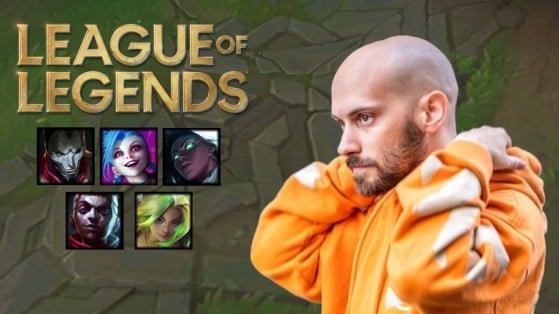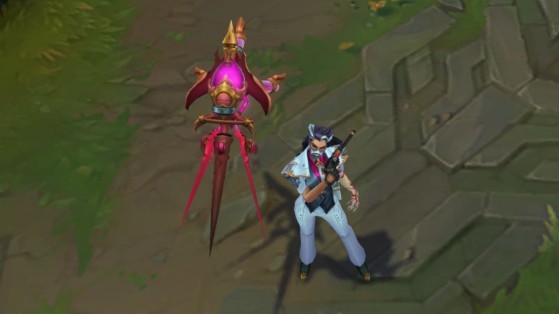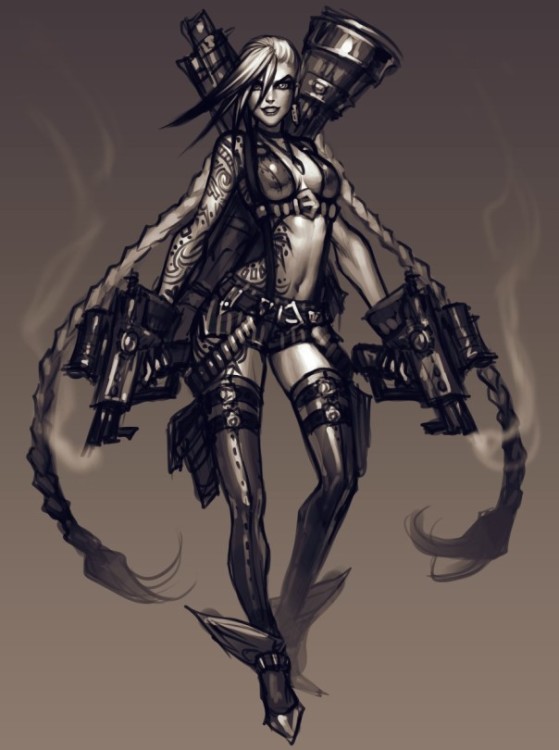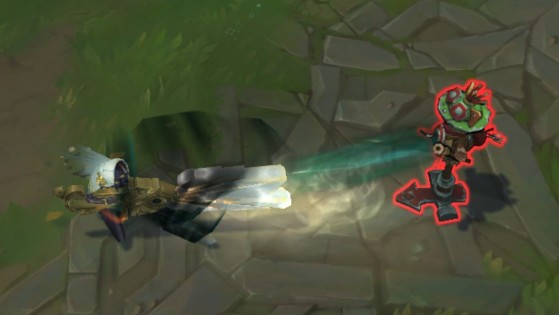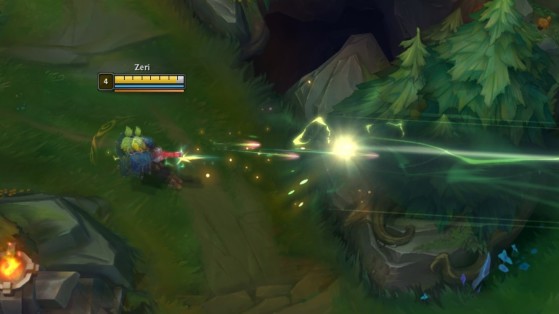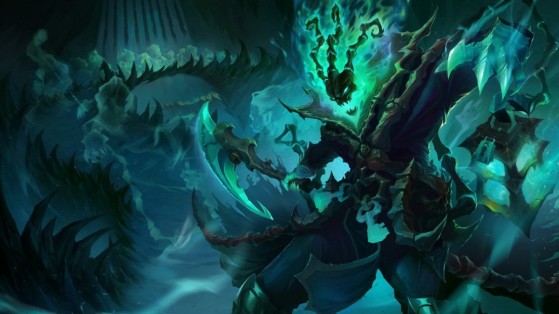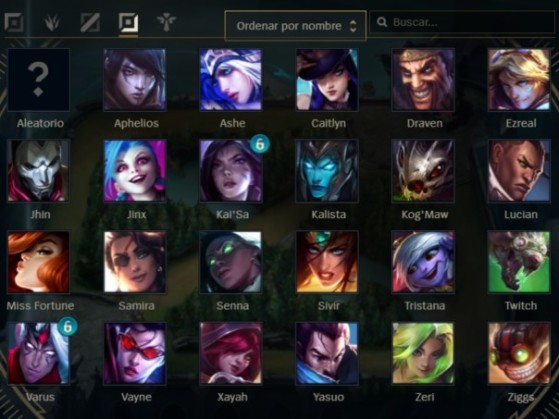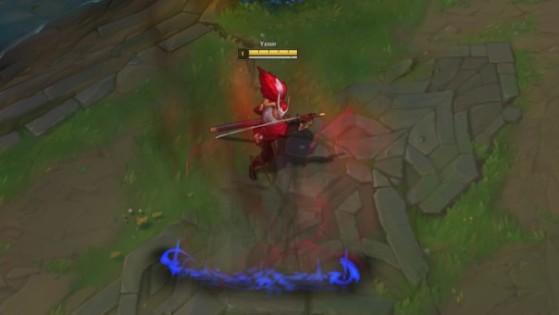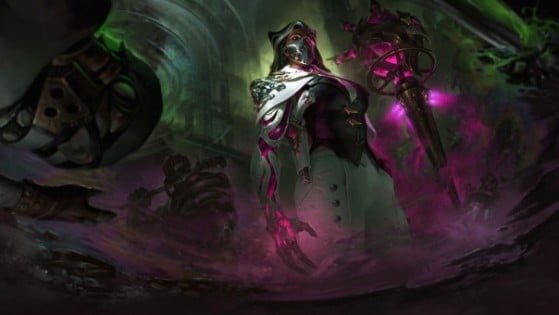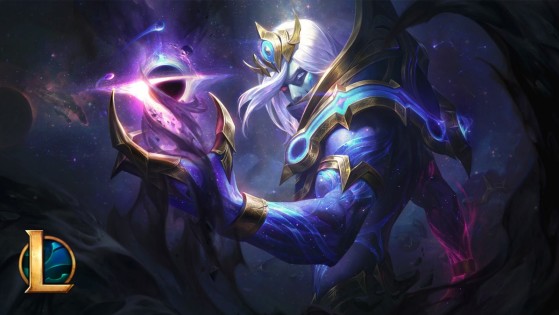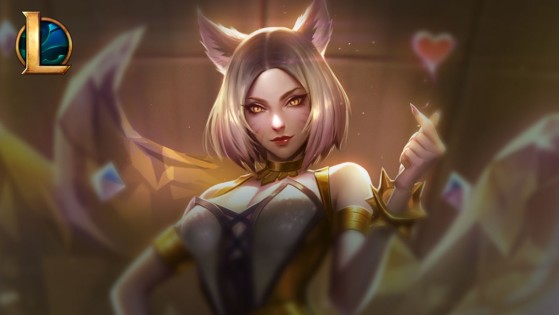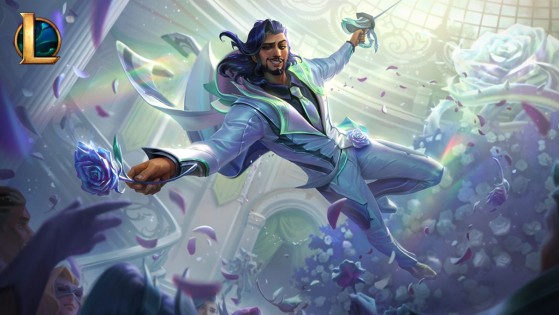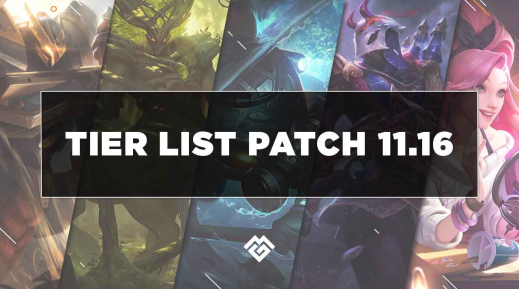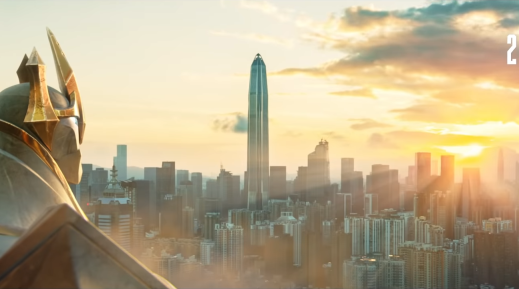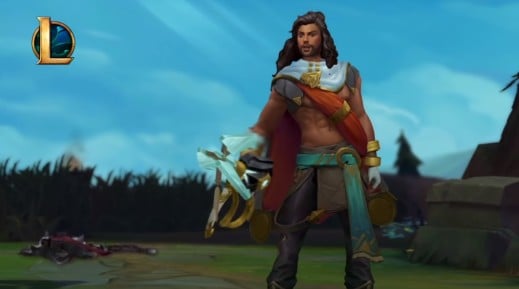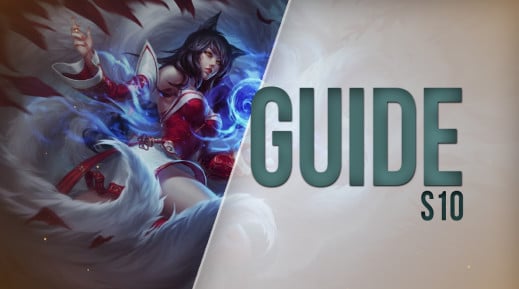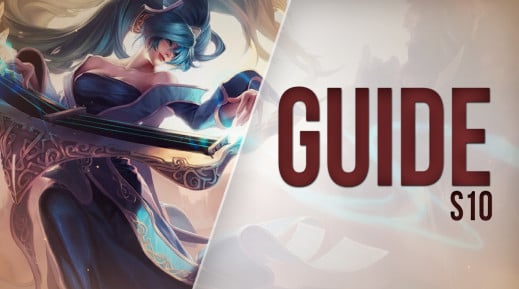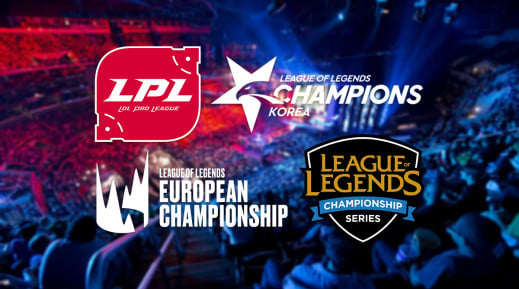Designing champions for League of Legends means taking a sketch and putting a rocket launcher on it. It is the art of turning generic ideas that many of us have thought of into something concrete that will end up being played by millions of people. Creating a tiny element that will only represent 0.62% of a huge game, but on whose failure or success will be the foundation of opinions from the whole playerbase.
Explained by Riot August, a character designer since 2014 who was recently promoted to Lead Champion Designer, the job consists of being the responsible for a champion from the day it still doesn't exist to the weeks after it arrives on Summoner's Rift. "We designers focus on the mechanics, on the things the characters will do in the game (...) but basically we're the ones who mess around to make the character feel good in every aspect."
So why should you create a new champion?
Until the release of Senna, League of Legends had no marksman who could be played as a support, and before Renata there was no middle-aged woman that looked that powerful. Sylas was one of the longest development with a cycle of over two years that introduced the ultimate stealing mechanic into the game. Yuumi represented the symbiosis, Viego possessed the dead and the list could continue saying something unique about each of the 159 characters.
The number of champions in League of Legends aims to be limitless because there will always be something new to add to the game. At Riot Games this is called "opportunity space" and is a term they use to refer to the group of players they could satisfy by releasing a character. A starting point that, despite how technical and organized it seems, can be very diverse. A specific mechanic, a role, a strange combination of classes or anything that makes you say 'finally they hit the nail on the head with the new champ'.
August sees the release of champions as one of the keys to League of Legends' success: "A lot of players want to try these new champions and even if you're not playing it yourself, their presence makes the game different. That's what keeps people coming back to play. You can play 20,000 games with Garen because the next game will be different. That's very important and a reason why the game is still alive after more than ten years," he explained.
The most important thing is to create something that gives players a reason to play the game again. Appeal to their curiosity by inviting them to experiment with so many variables that it is impossible to cover them all. From the designers' point of view it's about making something interesting that keeps your favorite game your favorite game. However... what's the starting point?
"August, you have to make a new champion."
"Champions can come from very different perspectives. Sometimes a concept that catches the eye is enough, as it happened to Jinx. Jinx was born thanks to Katie De Sousa, who published a concept art featuring a woman with a very distinctive blue hair with two pigtails, crazy look and lots of guns. People like me immediately fell in love with the champion. It was like 'wow, this character looks gorgeous. I have to do it.
However there are times when you start from absolutely nothing and don't even have any ideas about it, others when you only know the lane where the champion will be played."
For example, August says that with Viego the production team told him something like "your next champion comes out in x time and during the same time we''ll be working on the story of Ruination. We thought the best way to do it is for you to design the Ruined King... are you up for it?"
Another interesting case is Senna. When they started with the character they only knew that they had to implement a Marksman in the support position, and the rest of the ideas came from there. The 10th anniversary of League of Legends was coming soon and it was time for a big release for which the community had been expecting. It all came together because the champion existed previously and was a perfect fit: "Players had been trying to make this combination possible for a long time, it would feel like a good connection to Lucian and... they could play together!" he explained.
When development begins, it is possible that the creator of the future champion knows its name, the position or even what it will look like. However, that is all they will be able to get at best. The aforementioned "opportunity space" is a concept with no more meaning than that of a mystery seed. The champion designer oversees the design, art and narrative of the champions from that point on; being responsible for imagining what League of Legends will become after its creation.
Ideas shape the champions
"One fun thing about design is that there are different ways to approach it. I try to ask myself what the character is like and how I want it to feel. For example, with Jinx I knew I wanted to do a crazy, very unstable maniac. With Vi I was thinking of something more aggressive, punchy, that made you think that attack is the best defense and with Senna it was about the artists who created her amazing weapon."
Once we've started with our new champion, it's the ideas that make the difference. Many of Riot August's champions are known for incorporating weapons in League of Legends that don't seem to correspond to the Runeterra universe, and those are often the initial characteristics of the new character. For example, Jhin has a sniper, but most of the time he fires a magnum, which is a weapon familiar to any player of Apex Legends, Borderlands or Call of Duty.
What characterizes this revolver is that it is very heavy when firing, has a hellish recoil and a small magazine. Each bullet hit stings, but if we miss we'll be exposed. This idea created his passive where attack speed means more damage.
This initial idea is shared by many other characters. Zeri has a submachine gun and tries to transfer VALORANT's gameplay to the Summoner's Rift. The same happened to Jinx with the combination of rocket launcher, minigun and ray gun or to Senna with the previously mentioned light cannon. This element is known as a "power source" and is often a good template for shaping a champion's identity. It transforms "blue-haired maniac" into an early Jinx concept, does the same with "run a lot and play FPS-style" into Zeri and even allows you to turn something heavy into Senna.
A champion that fits in League of Legends
Having determined the opportunity space and the ideas that will characterize the new champion, it's time to take a pen and paper. The first thing a developer does is to create a few kits ideas. This technical term is the one that unites the community artists with the professional creators working for Riot Games. "They're those written snippets where we describe a set of skills to share with the team. If they like them and they get traction, we put them in the game and start testing. A lot of times, at least in my case, there's one skill that's fine and the rest have to go in the trash while we try new things."
The process of creating champions has become a trial and error that, on average, will take up the next year of the lead designer's life. In the best case scenario it will be six months, while in worst case scenarios a champion can have a production cycle of just over two years. During this process, the main goal is to complete a skill set that can fit into the game. After this, the artwork (which is almost complete) and the visual effects for each of the skills are finalized.
As in everything in life, there are different skills that make up the talent of a champion designer. August points to CertainlyT, creator of Aphelios, Zoe or Yasuo as one of the best in all of Riot Games in the skill department. "His champions have very few iterations. Thresh had his skill kit except for the ultimate in the first playable test." However, August-designed characters tend to get a bit more complicated. Thus, he considers it a win that in every skill kit that makes it to playtesting there is something that can stay on the champion.
These tests are done with recolored models of other characters and recycled skill effects. The goal is to test what has been defined on paper if it has had any traction no matter how crazy it sounds. For example, Zeri made it to the first tests with a W that tried to emulate an Operator shot. A very thin projectile with 3,000 units of range and 3 second cooldown that automatically executed enemies below 30% health. Of course it was removed, but it's a good sample of how crazy these early stages can be.
The funny thing is, the most complicated skill to create is never the first one. "For me the last skill is the most difficult because my champions usually have everything they need. Then you have to find a piece that fits well. The problem here is that when you have everything there are a lot of things you can't do. Because you know, it can't be that one character is able to do everything." Although, you may have heard of Viego at some point....
The skills you hate the most
Although Viego has been controversial, one of the aspects for which the community has praised August's work as a League of Legends developer the most is that his champions seem to be fairer. However, the creator dissociates himself from this and explains "They usually say that about my ranged characters, but I don't know what people would think of Jhin if I had to turn him into a melee fighter. These characters need a lot of things to work when they're focused on attacking."
He adds: "A lot of the things that players think are unfair for melee champions are actually required for them to operate and have interesting patterns. A good example is Yasuo's W. It's something that many players don't find fair, but it's essential to the champion. It allows us to tweak other things and make it so that the champion doesn't literally just one shot you. The wall gives you time to play the game." We hate it, but maybe we should consider it a lesser evil or a necessary sacrifice.
The perspective of time is also another element that defines how fair a champion seems. When Vi was released she was considered too unfair. A character that would come at you from 800 units away with no ability to do anything to her. Her tradeoff for why she has never shined in the pro game is that she has many counters and that she is two dimensional. Once everyone knows what she can do, everyone can deduce what she'll do and act accordingly.
"When we talk about marksmen, it's all about jumping on them and killing them. They have that marked weakness of being very fragile. Meanwhile a melee champion usually needs a lot more tools. The important part is that after a game you have a plan for next time. The dangerous territory would be if too often you have to think 'eh... well... I don't have an answer for next time'. That's how I understand the problem of unfair champions."
There are necessary and well-designed mechanics that frustrate the players and others that are not designed so well because not even Messi is capable of scoring all the penalties. But, even in the cases that can upset a player the most, League of Legends is a game with a multitude of systems interacting with each other. For example, I hate facing Yone. However, sometimes I wonder if there really is a problem with the character or is it other elements like items or possible excess damage that make me dissatisfied with him.
A new champion released in League of Legends
After a good amount of tests to define the skill kit and statistics, the champions move on to the final stages of their production phase. It is time to finalize the game model, create the VFX and pass the last tests so that the champion becomes a finished product. Ready to pass into the hands of the marketing team who will make a video showing how broken they could be for us to put a tweet that starts with "what is Riot thinking", continues accusing them of using a narcotic substance and ends with "this bug is broken as hell".
However, the goal with the latest adjustments is to create a balanced character. August said on many occasions (though not in our talk) that League of Legends "is a game that can be upgraded", so no problem is unsolvable if the structure has been done well.
Renata Glasc has just arrived in the Summoner's Rift in August's words, "things don't always go right", Riot Games has developed a contingency plan to balance in case they made a character strong. The same happened with Zeri, very powerful during the first patches. However, it's all good as long as there is a plan that maintains her identity and focuses on reducing her power or the most frustrating points players encounter in Summoner's Rift.
We've already found the opportunity space, designed skills on paper, tested and retested until we found a complete kit after weeks of thinking about that last skill. We've even created the final game model, skill effects, and mapped out a contingency plan in case something goes terribly wrong. The champion is ready to launch in the game in the next update. A few minutes of reading that for a whole team has been a year of their lives, and the work doesn't even end here: it's time to follow the champion after launch to balance and fix possible bugs.
This interview has been translated from MGG Spain by bxakid and was originally written by Bruno Ouviña aka GalleGutsito.
